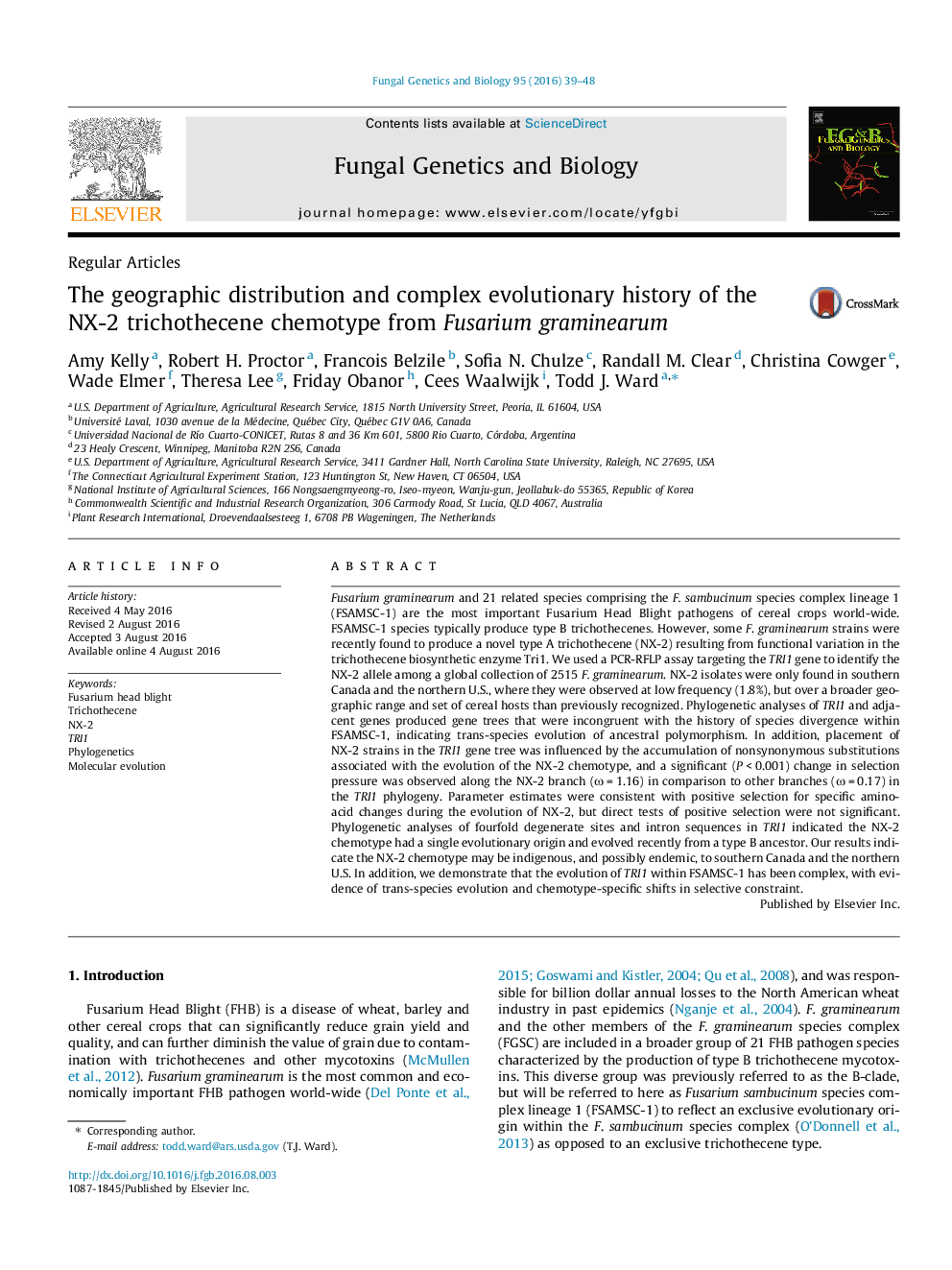| کد مقاله | کد نشریه | سال انتشار | مقاله انگلیسی | نسخه تمام متن |
|---|---|---|---|---|
| 2180651 | 1549996 | 2016 | 10 صفحه PDF | دانلود رایگان |

• NX-2 F. graminearum may be endemic to southern Canada and the northern U.S.
• TRI1 variation within FSAMSC-1 was shaped by trans-species evolution.
• The NX-2 chemotype evolved relatively recently from a type B ancestor.
• NX-2 evolved in association with a significant change in selection pressure on Tri1.
• NX-2 strains may occupy an evolutionary niche distinct from type B F. graminearum.
Fusarium graminearum and 21 related species comprising the F. sambucinum species complex lineage 1 (FSAMSC-1) are the most important Fusarium Head Blight pathogens of cereal crops world-wide. FSAMSC-1 species typically produce type B trichothecenes. However, some F. graminearum strains were recently found to produce a novel type A trichothecene (NX-2) resulting from functional variation in the trichothecene biosynthetic enzyme Tri1. We used a PCR-RFLP assay targeting the TRI1 gene to identify the NX-2 allele among a global collection of 2515 F. graminearum. NX-2 isolates were only found in southern Canada and the northern U.S., where they were observed at low frequency (1.8%), but over a broader geographic range and set of cereal hosts than previously recognized. Phylogenetic analyses of TRI1 and adjacent genes produced gene trees that were incongruent with the history of species divergence within FSAMSC-1, indicating trans-species evolution of ancestral polymorphism. In addition, placement of NX-2 strains in the TRI1 gene tree was influenced by the accumulation of nonsynonymous substitutions associated with the evolution of the NX-2 chemotype, and a significant (P < 0.001) change in selection pressure was observed along the NX-2 branch (ω = 1.16) in comparison to other branches (ω = 0.17) in the TRI1 phylogeny. Parameter estimates were consistent with positive selection for specific amino-acid changes during the evolution of NX-2, but direct tests of positive selection were not significant. Phylogenetic analyses of fourfold degenerate sites and intron sequences in TRI1 indicated the NX-2 chemotype had a single evolutionary origin and evolved recently from a type B ancestor. Our results indicate the NX-2 chemotype may be indigenous, and possibly endemic, to southern Canada and the northern U.S. In addition, we demonstrate that the evolution of TRI1 within FSAMSC-1 has been complex, with evidence of trans-species evolution and chemotype-specific shifts in selective constraint.
Journal: Fungal Genetics and Biology - Volume 95, October 2016, Pages 39–48